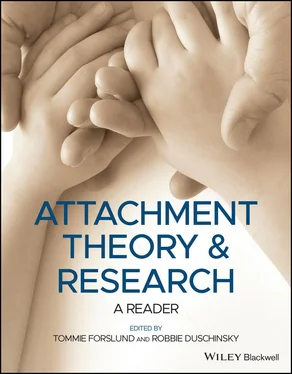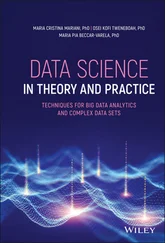124 122
125 123
126 124
127 125
128 126
129 127
130 128
131 129
132 130
133 131
134 132
135 133
136 134
137 135
138 136
139 137
140 138
141 139
142 140
143 141
144 142
145 143
146 144
147 145
148 146
149 147
150 148
151 149
152 150
153 151
154 152
155 153
156 154
157 155
158 156
159 157
160 158
161 159
162 160
163 161
164 162
165 163
166 164
167 165
168 166
169 167
170 168
171 169
172 170
173 171
174 172
175 173
176 174
177 175
178 176
179 177
180 178
181 179
182 180
183 181
184 182
185 183
186 184
187 185
188 186
189 187
190 188
191 189
192 190
193 191
194 192
195 193
196 194
197 195
198 196
199 197
200 198
201 199
202 200
203 201
204 202
205 203
206 204
207 205
208 206
209 207
210 208
211 209
212 210
213 211
214 212
215 213
216 214
217 215
218 216
219 217
220 218
221 219
222 220
223 221
224 222
225 223
226 224
227 225
228 226
229 227
230 228
231 229
232 230
233 231
234 232
235 233
236 234
237 235
238 236
239 237
240 238
241 239
242 240
243 241
244 242
245 243
246 244
247 245
248 246
249 247
250 248
251 249
252 250
253 251
254 252
255 253
256 254
257 255
258 256
259 257
260 258
261 259
262 260
263 261
264 262
265 263
266 264
267 265
268 266
269 267
270 268
271 269
272 270
273 271
274 272
275 273
276 274
277 275
278 276
279 277
Attachment Theory and Research
A Reader
Edited by
Tommie Forslund
and
Robbie Duschinsky

This edition first published 2021
© 2021 John Wiley & Sons Ltd
All rights reserved. No part of this publication may be reproduced, stored in a retrieval system, or transmitted, in any form or by any means, electronic, mechanical, photocopying, recording or otherwise, except as permitted by law. Advice on how to obtain permission to reuse material from this title is available at http://www.wiley.com/go/permissions.
The right of Tommie Forslund and Robbie Duschinsky to be identified as the authors of the editorial material in this work has been asserted in accordance with law.
Registered Offices John Wiley & Sons, Inc., 111 River Street, Hoboken, NJ 07030, USA John Wiley & Sons Ltd, The Atrium, Southern Gate, Chichester, West Sussex, PO19 8SQ, UK
Editorial Office 111 River Street, Hoboken, NJ 07030, USA
For details of our global editorial offices, customer services, and more information about Wiley products visit us at www.wiley.com.
Wiley also publishes its books in a variety of electronic formats and by print‐on‐demand. Some content that appears in standard print versions of this book may not be available in other formats.
Limit of Liability/Disclaimer of Warranty While the publisher and authors have used their best efforts in preparing this work, they make no representations or warranties with respect to the accuracy or completeness of the contents of this work and specifically disclaim all warranties, including without limitation any implied warranties of merchantability or fitness for a particular purpose. No warranty may be created or extended by sales representatives, written sales materials or promotional statements for this work. The fact that an organization, website, or product is referred to in this work as a citation and/or potential source of further information does not mean that the publisher and authors endorse the information or services the organization, website, or product may provide or recommendations it may make. This work is sold with the understanding that the publisher is not engaged in rendering professional services. The advice and strategies contained herein may not be suitable for your situation. You should consult with a specialist where appropriate. Further, readers should be aware that websites listed in this work may have changed or disappeared between when this work was written and when it is read. Neither the publisher nor authors shall be liable for any loss of profit or any other commercial damages, including but not limited to special, incidental, consequential, or other damages.
Library of Congress Cataloging‐in‐Publication Data Names: Forslund, Tommie, editor. | Duschinsky, Robbie, editor. Title: Attachment theory and research : a reader / Tommie Forslund, PhD, researcher in Developmental Psychology at Stockholm University, Stockholm, Sweden; researcher at SUF Resource Center, Region Uppsala, Uppsala, Sweden, Robbie Duschinsky, Head of the Applied Social Science Group and Senior University Lecturer, University of Cambridge, Cambridge, UK. Fellow and Director of Studies, Sidney Sussex College, Cambridge, UK. Description: First edition. | Hoboken : Wiley, 2021. | Includes bibliographical references and index. Identifiers: LCCN 2020048348 (print) | LCCN 2020048349 (ebook) | ISBN 9781119657880 (paperback) | ISBN 9781119657897 (adobe pdf) | ISBN 9781119657903 (epub) Subjects: LCSH: Attachment behavior. | Developmental psychology. Classification: LCC BF575.A86 F67 2021 (print) | LCC BF575.A86 (ebook) | DDC 155.5/1241–dc23 LC record available at https://lccn.loc.gov/2020048348LC ebook record available at https://lccn.loc.gov/2020048349
Cover Design: Wiley
Cover Image: Denis Pogostin/iStockphoto
Attachment theory originates in the work of the British psychoanalyst and child psychiatrist John Bowlby and the Canadian clinical psychologist Mary Ainsworth. Bowlby sought a scientific explanation for the affectional bonds that children form with their caregivers, as manifested by attempts to seek and maintain proximity to and comfort by their caregivers, and by negative reactions following prolonged separations and losses. He eventually formulated the core tenets of attachment by drawing from multiple scientific disciplines, including ethology, psychoanalysis and cognitive psychology (Van der Horst, 2011). Bowlby’s emphasis on the importance of early care may come across as self‐evident today. However, it was anything but an orthodox position when he formulated attachment theory, at which time the importance of children’s actual experiences with their caregivers were not sufficiently acknowledged (Bowlby, 1940, 1951, 1969/1982). Ainsworth, who collaborated closely with Bowlby, then extended his account by conducting extensive empirical observations of caregiver–child interaction, and by identifying individual differences in infants’ expectations of the availability of their caregivers (Ainsworth et al., 1978; Van Rosmalen et al., 2015, 2016).
Already in their lifetime, their work influenced various aspects of policy to do with children. One important shift to which they contributed was recognition of the negative effects of hospitalization for children when, as was common policy, their caregivers were not permitted to visit or allowed to visit only very irregularly (Bowlby et al., 1952; Van der Horst & Van der Veer, 2009). Ideas from attachment theory have also been influential for parents, teachers, child protection services and policy‐makers. Key concepts and ideas that entered into circulation included Bowlby’s emphasis on the importance of early care for socioemotional development, his concern about major separations of infants from their caregivers, and his emphasis on the value of continuity in child–caregiver relationships. Ainsworth’s ideas also gained recognition, particularly her identification of the importance of caregiver sensitivity for children’s socioemotional development. She is also known for her account of the sensitive caregiver as a “secure base” from which the child can explore the environment, and as a “safe haven” to which the child can return for comfort and protection. For instance, the “First 1000 Days” policy agenda acknowledges the developmental importance of early care, and makes explicit reference to attachment theory (House of Commons Health and Social Care Committee, 2019). Further, preschool curricula often make reference to attachment theory and the importance of creating a secure base to facilitate children’s exploration and, through this, their learning.
Читать дальше













